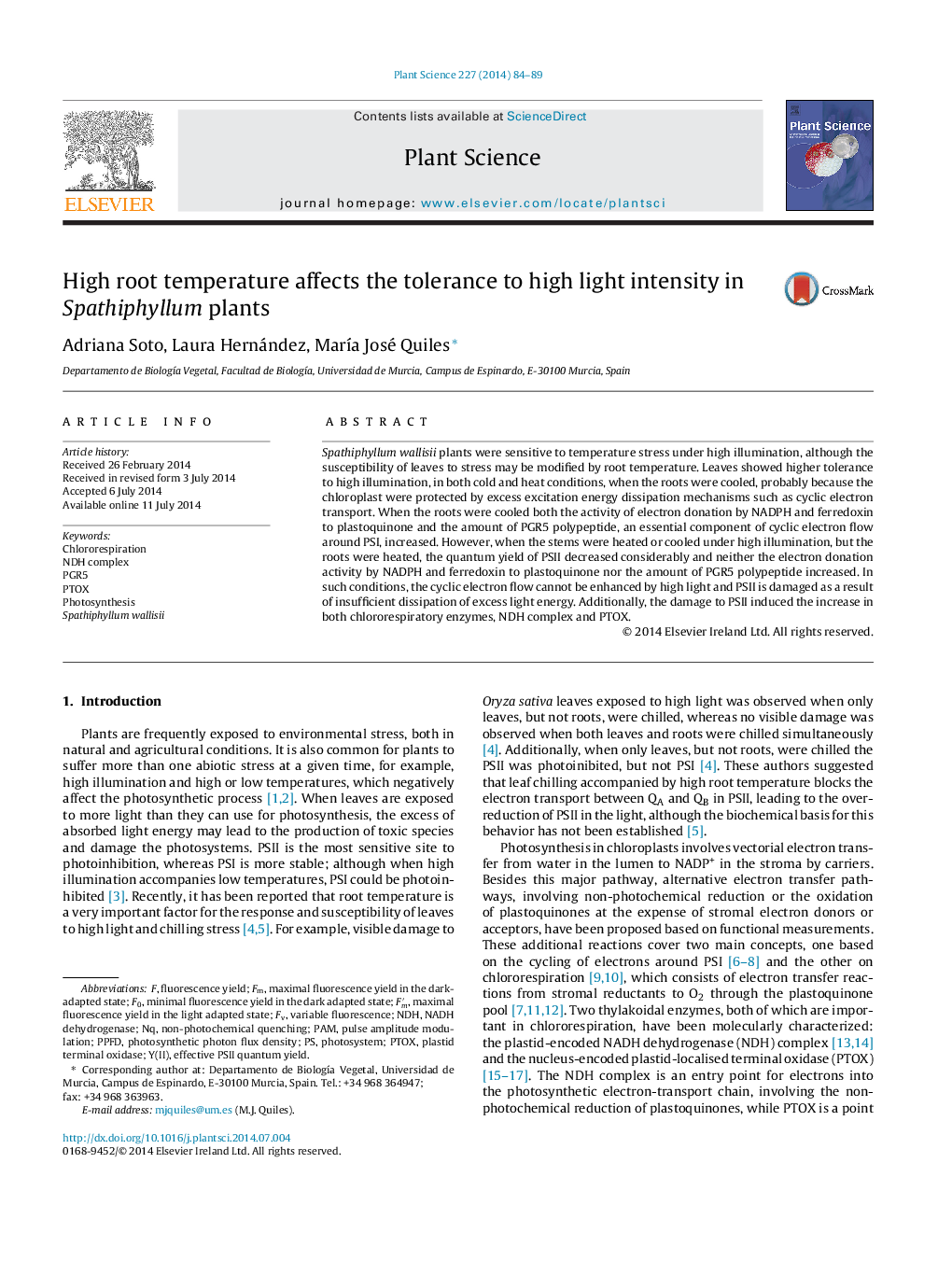| Article ID | Journal | Published Year | Pages | File Type |
|---|---|---|---|---|
| 8358202 | Plant Science | 2014 | 6 Pages |
Abstract
Spathiphyllum wallisii plants were sensitive to temperature stress under high illumination, although the susceptibility of leaves to stress may be modified by root temperature. Leaves showed higher tolerance to high illumination, in both cold and heat conditions, when the roots were cooled, probably because the chloroplast were protected by excess excitation energy dissipation mechanisms such as cyclic electron transport. When the roots were cooled both the activity of electron donation by NADPH and ferredoxin to plastoquinone and the amount of PGR5 polypeptide, an essential component of cyclic electron flow around PSI, increased. However, when the stems were heated or cooled under high illumination, but the roots were heated, the quantum yield of PSII decreased considerably and neither the electron donation activity by NADPH and ferredoxin to plastoquinone nor the amount of PGR5 polypeptide increased. In such conditions, the cyclic electron flow cannot be enhanced by high light and PSII is damaged as a result of insufficient dissipation of excess light energy. Additionally, the damage to PSII induced the increase in both chlororespiratory enzymes, NDH complex and PTOX.
Keywords
Related Topics
Life Sciences
Agricultural and Biological Sciences
Plant Science
Authors
Adriana Soto, Laura Hernández, MarÃa José Quiles,
